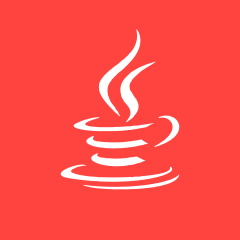Java是否为音频_synthesis_内置了库?
注意:我不想“读取音频文件foo.bar并播放它”。
我想以编程方式即时生成音频文件并进行播放。
Java是否为此内置了库,还是属于系统依赖的库?
谢谢!
 温温酱
温温酱浏览 533回答 3
3回答
-

沧海一幻觉
此Sun论坛帖子中包含一些有趣的代码,用于生成单音。同样,鉴于WAV文件格式不是太复杂,您可以创建一个代表所需波形的表,然后将其写入文件。周围有一些示例,例如原始音频转换器以及如何编写wav文件。 -

红糖糍粑
最简单的方法是使用Java的内置MIDI库:int channel = 0; // 0 is a piano, 9 is percussion, other channels are for other instruments int volume = 80; // between 0 et 127 int duration = 200; // in milliseconds try { Synthesizer synth = MidiSystem.getSynthesizer(); synth.open(); MidiChannel[] channels = synth.getChannels(); // -------------------------------------- // Play a few notes. // The two arguments to the noteOn() method are: // "MIDI note number" (pitch of the note), // and "velocity" (i.e., volume, or intensity). // Each of these arguments is between 0 and 127. channels[channel].noteOn( 60, volume ); // C note Thread.sleep( duration ); channels[channel].noteOff( 60 ); channels[channel].noteOn( 62, volume ); // D note Thread.sleep( duration ); channels[channel].noteOff( 62 ); channels[channel].noteOn( 64, volume ); // E note Thread.sleep( duration ); channels[channel].noteOff( 64 ); Thread.sleep( 500 ); // -------------------------------------- // Play a C major chord. channels[channel].noteOn( 60, volume ); // C channels[channel].noteOn( 64, volume ); // E channels[channel].noteOn( 67, volume ); // G Thread.sleep( 3000 ); channels[channel].allNotesOff(); Thread.sleep( 500 ); synth.close(); } catch (Exception e) { e.printStackTrace(); }
 随时随地看视频慕课网APP
随时随地看视频慕课网APP
相关分类


 Java
Java